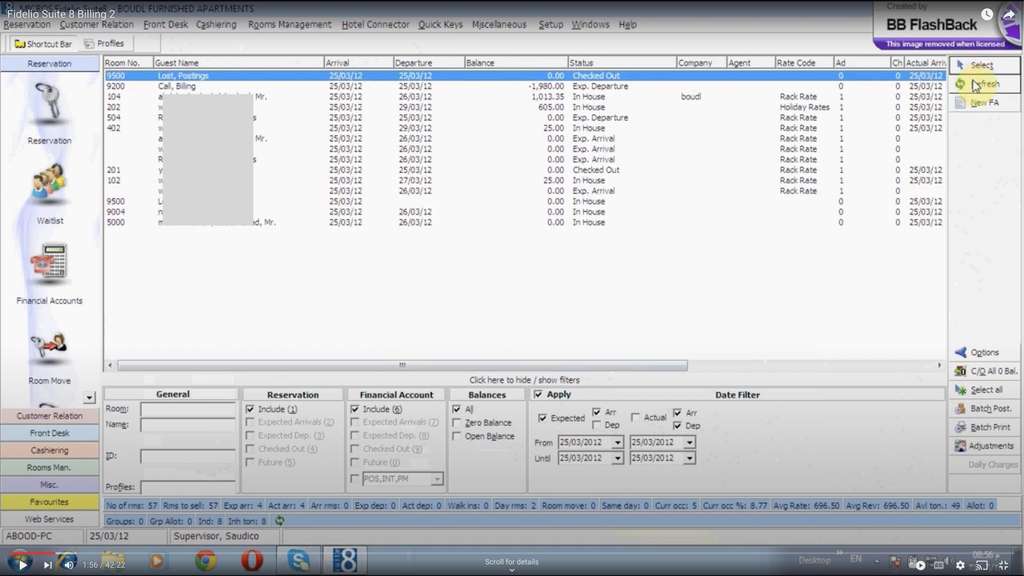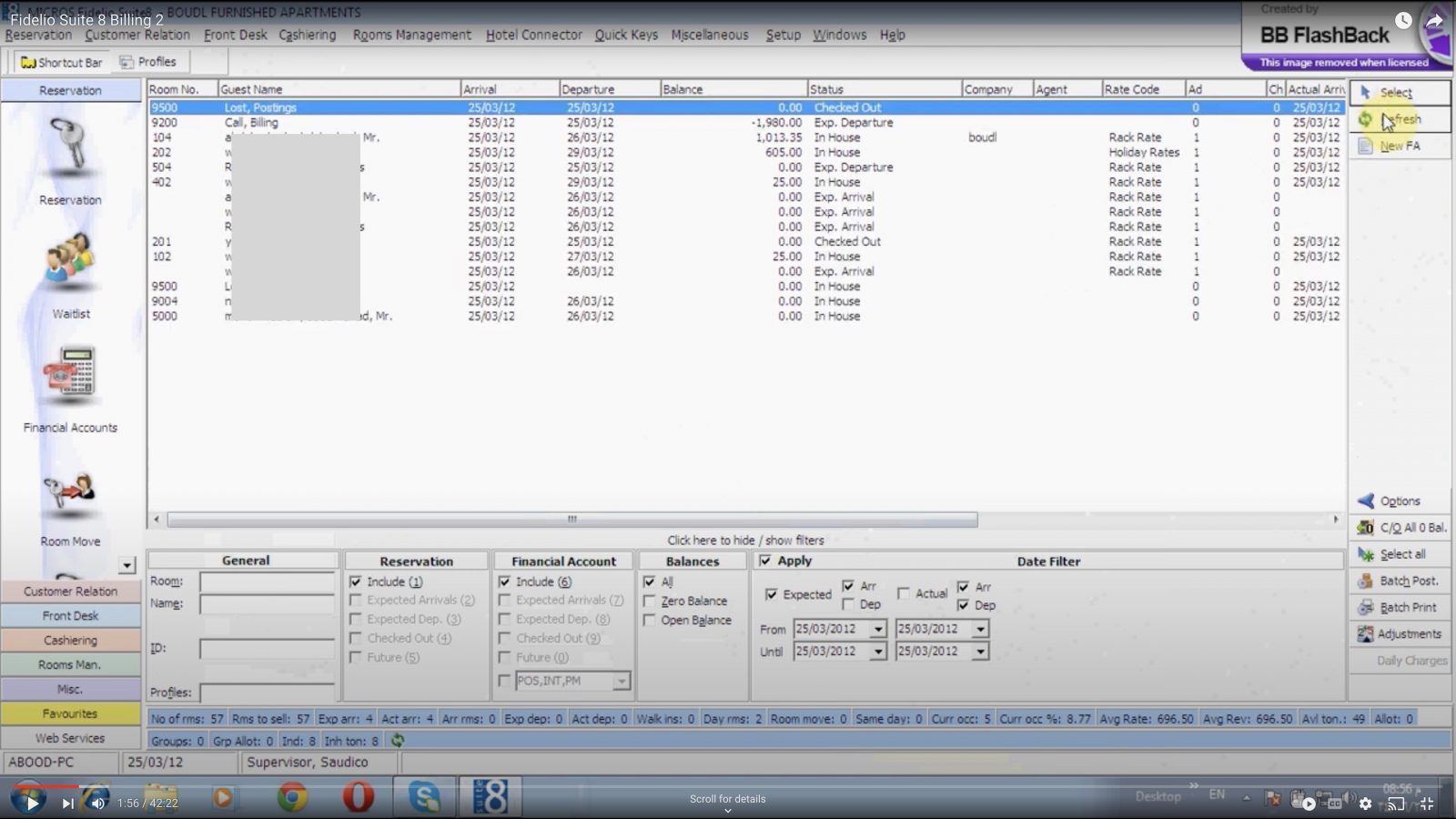Looking Back on the Future of the Hotel PMS
A conversation with Keith Gruen - Co-founder of Fidelio Property Management Systems

Apart from four other companies, Keith Gruen was the co-founder of Fidelio Property Management Systems, one of the first in the PMS category of hotel software and certainly one of the most widely used. After co-founding companies in industries as varied as real estate, pharmaceuticals, and construction software, he now focuses his time as a board member of a few of these companies as well as an angel investor, mainly in carbon trading.
In this opinion piece from 2007, Keith Gruen discussed the past, present, and future of the hotel PMS. While he’s no longer as involved in the hospitality industry, he was present for a pivotal moment in hospitality tech, and the article above covers a lot of fascinating ground. Some predictions were surprisingly prescient including predicting the move to cloud tech the incorporation of other functionality into PMS (as well as its merging with other software tools), and the greater industry migration to a guest-centric philosophy.
We connected with Keith to revisit the key points of the article with him and set them in contrast to the current landscape.
What are some of your predictions from the 2007 article, and did they materialize?
Back then, I was assuming that the hotel PMS would be eventually subsumed by other areas, or even have its function taken over by OTAs, seen as they owned the inventory, and, most crucially, had access to the guests. Some of them tried, like booking.com, and bought PMS companies in efforts towards that goal, but I don’t believe it was a major success or at least not yet. Companies like Amadeus, which are big in distribution, do have a PMS now.
Another area I had a feeling might take over the PMS functionality was CRM, as they own guest profiles and the loyalty programs, combined with the fact that guests would potentially access their data via the CRM, thus making it the new PMS. This didn’t happen.
Now it’s 15 years later, the term PMS is still around and the product is still viable. The concept has changed a bit, but I didn’t expect PMS to still be its own category, certainly not after all this time, and yet it is.
Do you see tools like PMS, CRS, and CMS merging into one?
Airlines are more unified, you can’t separate an airport from another, but hotels you can. Guests can be loyal to a particular hotel in a certain city, but not necessarily to the brand; there are all these different permutations, and by nature, there can never be true consistency throughout the brand. That’s just the way hotel chains are.
Why do hotels have a hard time with digital transformation under the franchising model, but other industries don’t?
The data sharing element and setting up of prices across a given region are critical to the hotel business, although I suppose fast food chains using the franchise model do it, too. I’m not an expert in the fast food industry, but my guess is they have some of the same problems hotel chains do, we just don’t know it. I’m sure that behind the scenes they have all sorts of arguments and discussions about which software, platform, and devices to use, and the guest-facing experience would be pretty much identical, but there are probably differences between restaurants behind the scenes.
When speaking of the hotel PMS, what inspired Fidelio’s guest centricity? This was unusual at the time and is now standard.
If we weren’t the ones who coined the term “guest profile”, I am sure that in the very least we created the first guest-centric PMS. Today this is considered absolutely normal, but back in the 80s, there were only a handful of hotel PMSs and they were spinoffs, if you will, of the airline reservations systems. These systems did not care about guest or passenger profiles, all you had was a reservation number, and some of the hotel systems were copies of that, with some even being owned by airlines. So you had the inventory, you could book, and you knew the name of the guest, but once the guest was in and out you lost the name of the guest, just like airlines did – and still do, unless a frequent flyer number is used.
When building Fidelio in the mid to late 80s, our first customers were not the Hiltons and Marriotts, but smaller, family-owned resorts like the Black Forest of Germany. These hotels had repeat guests who had been regulars for years, who had been staying at these hotels for generations, and they knew them: their names, which wine they drank, the pillows they liked. Everything was kept in index cards, books, and charts on the wall as they collected more data, so what they wanted us to build for them was a system to make their tens of thousands of index cards quickly accessible in the future.
 I was in my early 20s and, frankly, knew nothing about hotel software, but they told me this was what they needed so, sure, I built it, and this very first version of Fidelio wasn’t even a reservation system, but basically a guest profile database. It had the names of all their guests, listed their previous stays, their likes and dislikes, their birth dates and that of their children, the wines they drank, their favorite room and favorite table at the restaurant, and only half a year later did we add a reservation function on top of that. So the guest-centric system was not so much by design as it was an answer to the needs of our first customers.
I was in my early 20s and, frankly, knew nothing about hotel software, but they told me this was what they needed so, sure, I built it, and this very first version of Fidelio wasn’t even a reservation system, but basically a guest profile database. It had the names of all their guests, listed their previous stays, their likes and dislikes, their birth dates and that of their children, the wines they drank, their favorite room and favorite table at the restaurant, and only half a year later did we add a reservation function on top of that. So the guest-centric system was not so much by design as it was an answer to the needs of our first customers.
What are some of the current hospitality technology trends you’ve observed?
It’s a funny thing to think about now, but hotels used to be ahead in terms of technology adoption a generation ago. They used to advertise color TVs and eventually pay TV programs, air conditioners, massage beds, and in-room jacuzzis, which is all technology we might laugh at today, but these were things people didn’t have at home and made a real difference in attracting guests. This doesn’t work anymore, because today there aren’t really any gadgets we can offer that guests won’t have better versions of at home, but maybe one day this will be true again. For now, we have moved on from the hardware and the edge lies more in the experience.
A very interesting development is the discussion on data sovereignty, where the guest should own and control their data. Things will have to change, as hotels may only be able to keep and use guest data for the duration of their stay, and this is obviously a disadvantage for them. There are already people working on finding out how to convince guests to allow hotels to keep their data, perhaps by offering perks in return for it, and that’s something hotels will have to work very hard to get on top of and come up with new tools.
From the perspective of a guest, I’ve been pleasantly surprised by how guest-facing technology is working quite well in some hotel chains’, namely due to their mobile apps. I’ve recently downloaded one of these apps and it allowed me to check in remotely, get notified when my room was ready, and go right up to my room by using the app to open the door. There were hiccups only when sending a message to the front desk for special requests, but that’s where they might have neglected to invest in staff to answer these special requests. The technology is not perfect, but it’s something we’ve all been talking about and now it’s here, even though smaller hotel groups or locations outside of the big countries may not yet be able to afford it.
As a last note, we can also see now that successful hotel PMS companies are moving in the direction of ease of use – hoteliers have become picky, and it’s come to be expected that installing such a system has to be as easy as downloading an app on a phone.
Why aren’t hoteliers as passionate about PMS now as they used to be?
I think the main reason is that hoteliers don’t use PMSs nearly as much as they used to. The system is there, but the ones using it are the guests, and what they are using are other applications that interface with it.
As developers, we used to spend so much time making a beautiful reservation screen so that an agent could easily type in a reservation while speaking to the guest on the phone, but this doesn’t happen that much anymore, it’s just not that important. For the time, our application looked really great and modern, colorful, and fast, and the staff actually enjoyed using it. But nowadays it’s not so crucial as guests will make their own reservations, so guest-facing interfaces are more important. The same goes for check-in and any other screens that guests interact with.
However, functionality is still extremely important, and integration with other applications is more vital than ever before. That’s essentially what PMSs have evolved into, a platform on which all sorts of other technologies integrate. It has databases, inventory, financial transactions, and so much more. But I feel that the user interface was what hoteliers loved, and now it isn’t as important as before.
Do you still believe, as mentioned in 2007, that the industry needs a jolt from the outside from time to time?
I did say that at the time, but it didn’t happen. So you see, not all of my predictions came true. Drips and drops from outside companies did make their way through, but they were never really successful. I used to think that a company such as Salesforce, SAP, or Microsoft would move in and take over the market, but all of them played with the idea of a PMS or a hotel system at one time or another and all of them gave up. One or two of these companies now do have a PMS, but it’s only after their fifth or sixth try, so nobody from the outside really did come in.
And maybe that’s why the hotel PMS still exists as its own category and has evolved as hoteliers increasingly need installation to be simple and easy – a process that used to take up to two weeks and was very costly.
We all know that guest expectations have changed, but they have also done so for hoteliers in regard to their technology providers.

